Hanging Columella
What is a hanging columella?
The columella is the bridge of tissue that separates the nostrils at the nasal base. Ideally, the columella is positioned such that at most 4-mm of nostril is seen on profile view. A nose is said to have increased "columellar show" when more than this amount of nostril is visible.
What can cause a hanging columella?
There are several possible causes of a hanging columella. Some patients are born with a hanging columella. Often this is secondary to an overly long septum that pushes the columella downward. In other cases the actual orientation and positioning of the columellar cartilages (medial and intermediate crura) are the cause. In this case these cartilages can be overly prominent or plunging. The patient below is a good example of a congenital hanging columella.
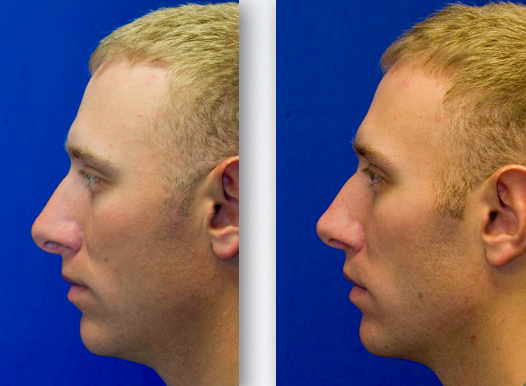
The patient above had a naturally hanging columella that he wished to have improved. From his exam Dr. Lamperti could see that his overly long septum was the cause of the problem. Using a closed approach a tongue-in-groove setback approach was used to treat the hanging columella. Similar to tongue-in-groove joinery in carpentry, this involves separating and advancing the two nasal tip cartilages that form the columella upward onto the septum. These cartilages are then sutured to the septum creating a stable, durable nasal tip support structure. Another option is to resect some of the the columella and then suture the columellar cartilages upward.
You can watch an intra-operative video showing a this tongue in groove columellar setback technique here.
The patient below also had a pre-existing hanging columella. During her rhinoplasty to improve her profile line and tip over-projection Dr. Lamperti also reduced her columellar show by using a tongue in groove setback of her columellar cartilages onto her septum.
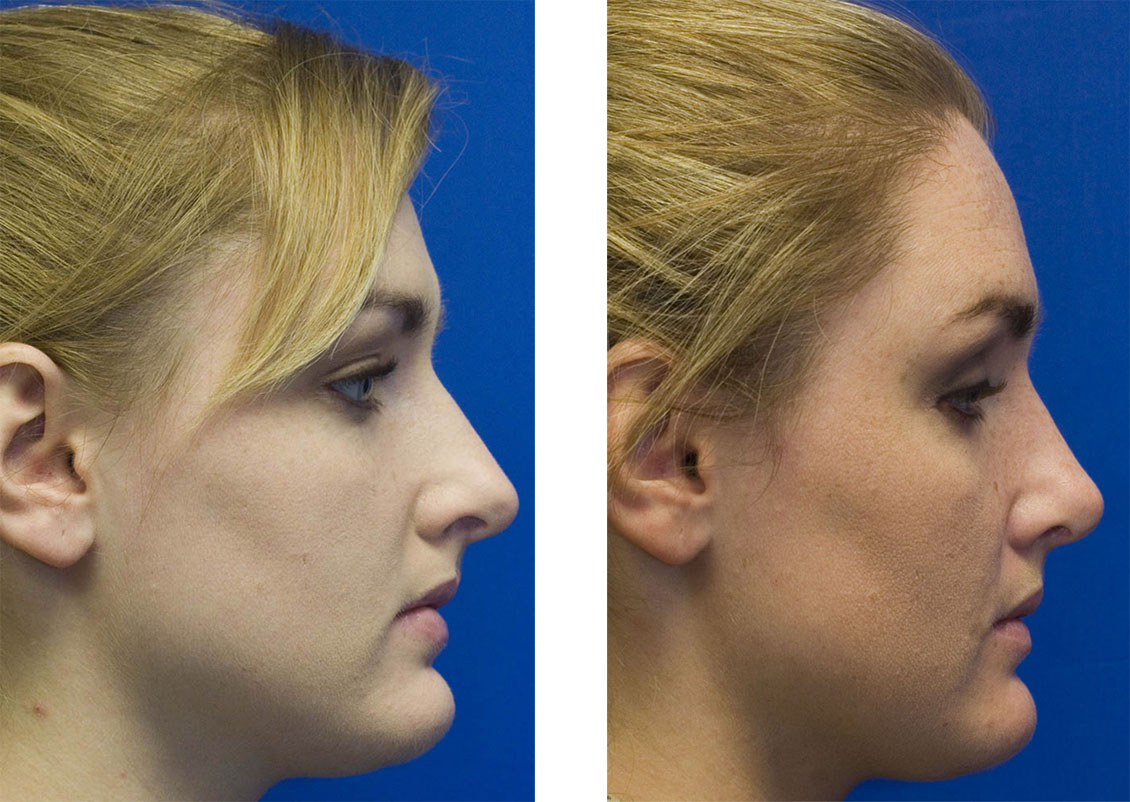
Hanging columella due to prior rhinoplasty
A hanging columella can also be due to prior rhinoplasty surgery. A columellar strut or caudal extension graft that protrudes too far can push the columella downward. Other causes include an overly thick shield graft or plumping graft. Bowing and malpositioning of the columellar cartilages can result from a loss of tip projection after surgery. Unfortunately, a relative hanging columella can be seen quite commonly after rhinoplasty due to excessive cartilage resection and alar retraction which causes increased columellar show.
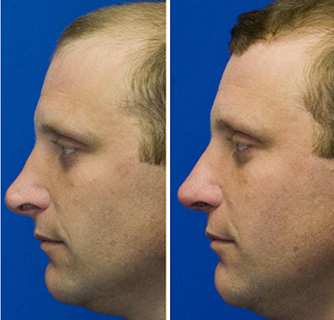
This patient above has increased columellar show due to a combination of a hanging columella and alar retraction. In this patient's case the hanging columella was due to medial crura malposition and a long septum. During his revision rhinoplasty his strut was removed and a tongue-in-groove setback was performed. Additionally, his alar retraction was improved.
Hanging columella from loss of Tip Projection and Prominent Infra-Tip Lobule
The patient shown below has a hanging columella due to a combination of a prominent infratip lobule (due to loss of tip projection) and scar tissue that pushed her medial crura downward.
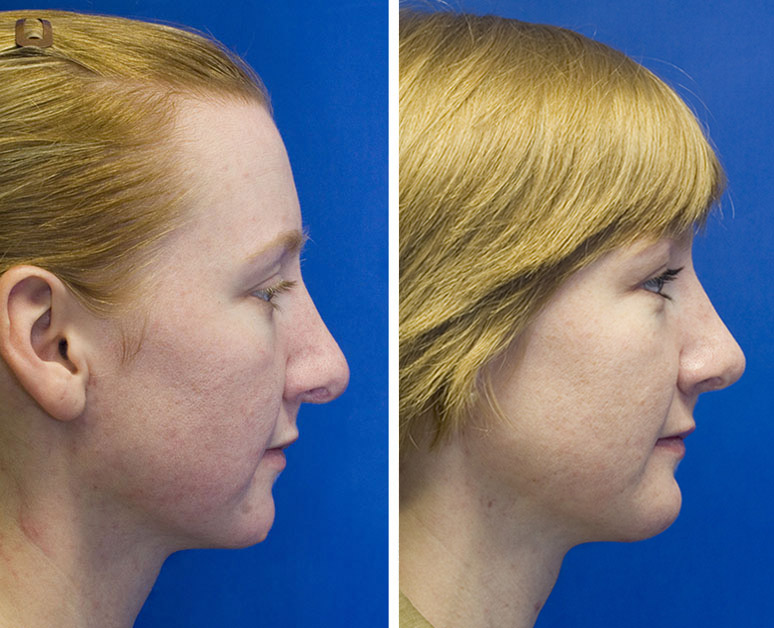
During her revision rhinoplasty surgery her excess scar was excised and her plunging intermediate crura were repositioned to create a more balanced, natural tip.
More Hanging Columella Repair Photos
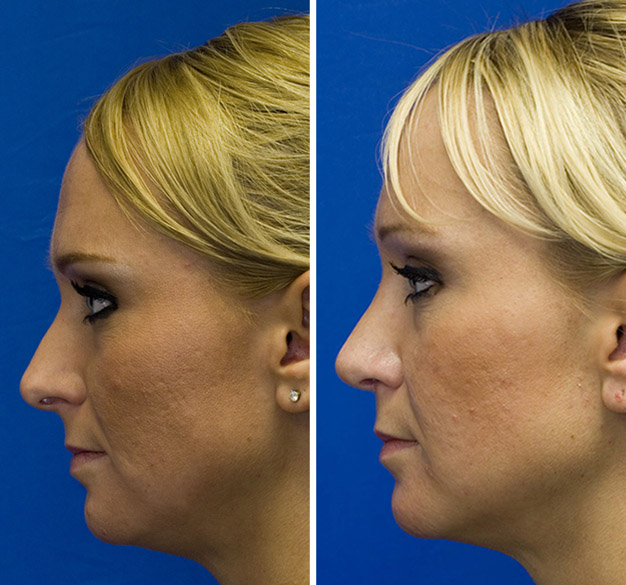
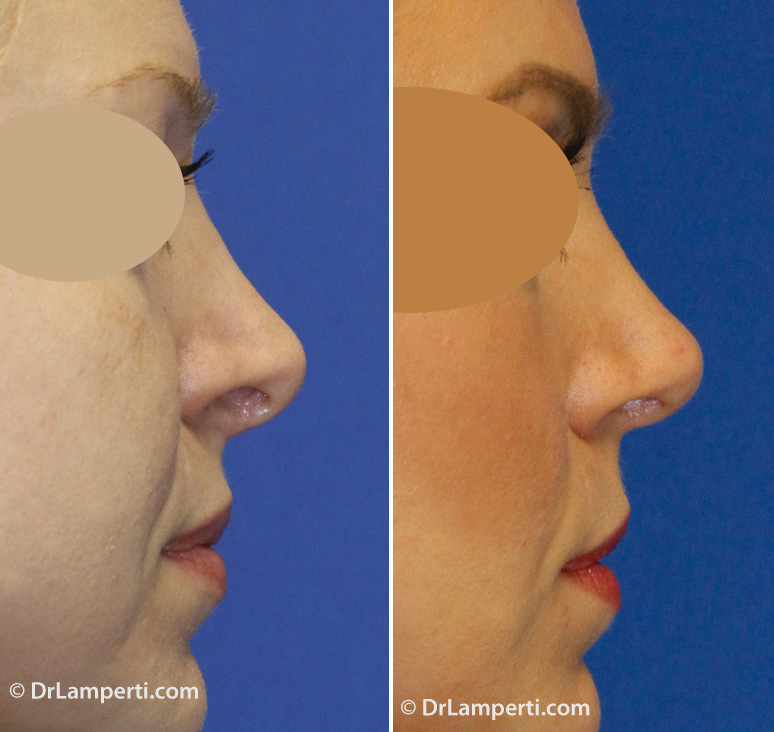
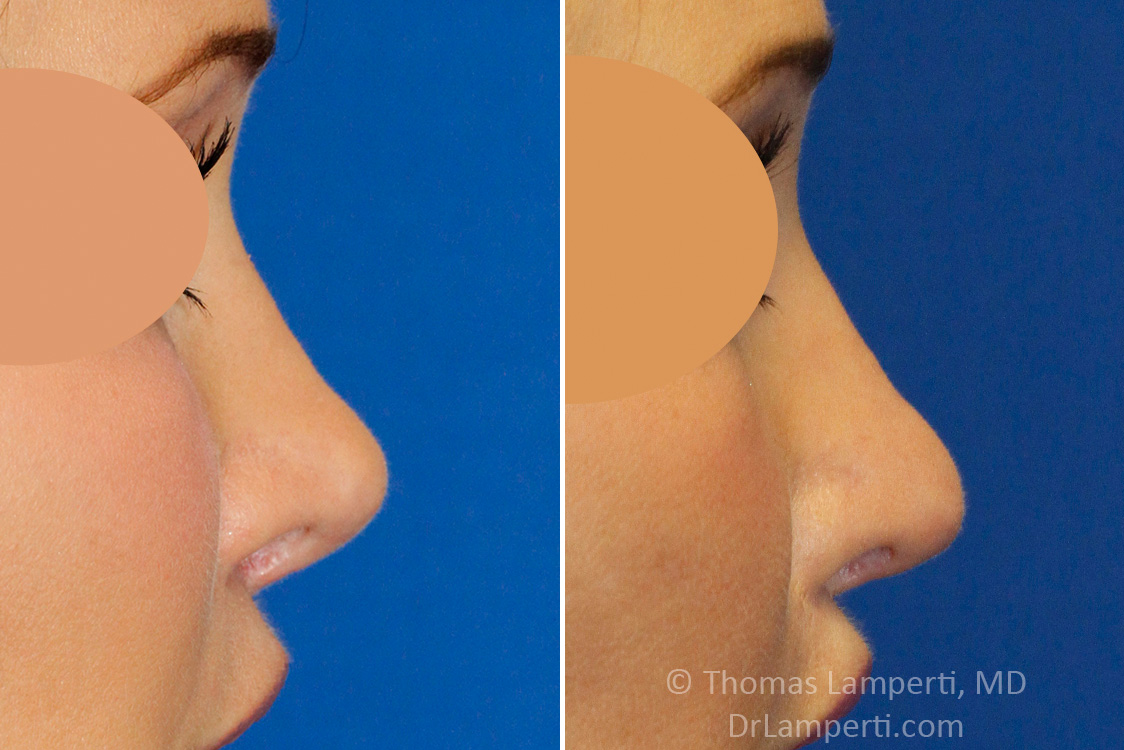






Meet Plastic Surgeon, Dr. Lamperti
Dr. Lamperti, a Seattle rhinoplasty super-specialist, has devoted his career to treatments of the head, face and neck. He feels that by focusing his plastic surgery endeavors solely to the face he is best able to provide the excellent results his patients desire.
Interested in learning more about having a Rhinoplasty Treatment in Seattle with Dr. Lamperti?
Contact us to have a private consultation or view Before & After photos here.